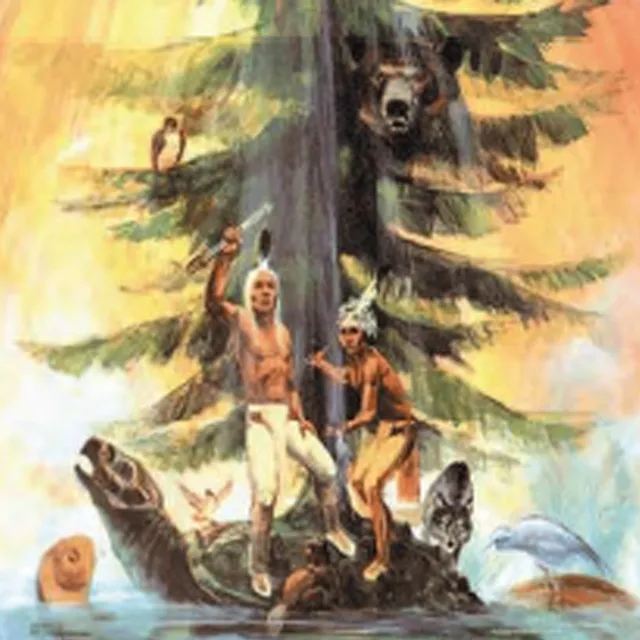
The Haudenosaunee
Many Indigenous communities have creation stories that describe their origins. An important aspect of Indigenous history includes the creation of the Haudenosaunee (hoe-dee-no-SHOW-nee, meaning “people who build a house”) confederacy or alliance among six Native American nations who are more commonly known as the Iroquois Confederacy. The creation of this federacy reaches back to the 12th century and demonstrates one of the earliest forms of democratic governance which directly impacted the formulation of the U.S. government.
The story of how the six nations came together and formed the Great Law of Peace, after the origin story of Sky Woman, shapes Haudenosaunee democracy and culture. In approximately 1142 AD, a series of natural events made life disorderly and hostile among the Indigenous communities. Amongst the violence, a man named Deganawida, a name too sacred to pronounce (yet fine in printed form), respectfully referred to as “the Peacemaker” by Haudenosaunee people, traveled amongst the Iroquois tribes spreading a message of peace. He was able to convert many individuals, the first partner, a powerful woman named Jikonsaseh, the Maize Maiden or Lynx Woman who served all warriors. She became his first partner, and the Peacemaker decided then that when nations came together, women would give chiefly titles to men. From here on out she was known as the Peace Queen.
After converting the fiercest Hiawatha, the Mohawks became the first nation of the confederacy, under the matriarchal and matrilineal power of women. Using the symbol of a group of arrows being stronger than one arrow, the Peacemaker was able to unite then the Oneida, Cayuga, Seneca, and Onondaga. In celebration, the five tribes gathered and buried their weapons under a pine tree, which became the Tree of Peace.
The Tree of Peace symbolizes the Great Law of Peace that was formed by the nations. The four main roots represent the four directions and the paths of peace that lead to the Haudenosaunee territory, where all who want to follow the Great Law of Peace are welcome. An eagle is at the top, which is the guardian of the Haudenosaunee and messenger to the Creator. A governing group of clan and village chiefs would guide the Confederacy by consensus, with each tribe under a matrilineal system of descent and property-holding, sharing power among sexes. Many Haudenosaunee communities live by the principles of the Great Law today.
Haudenosaunee people refer to themselves as Ongweh’onweh (ongk-way-HON-way), meaning “real human being.” Although the nations share many cultural similarities and family connections, each is unique and has its own distinct Iroquoian language. Though life has changed since colonization and the establishment of United States and Canadian governments, Haudenosaunee continue to live and thrive on territories and reservations in New York and Wisconsin, in communities in Oklahoma and North Carolina, and in territories Canada; as well as places across the country and world, living in houses and apartments, with many different professions.